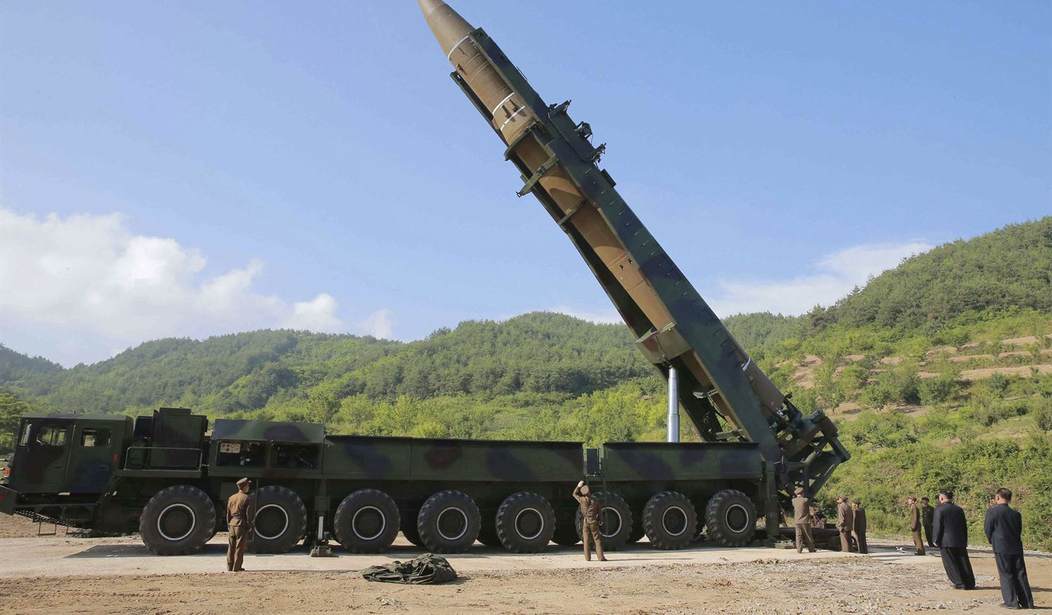President Donald J. Trump promised to end the war in Afghanistan – making way for a possible new peace dividend. This surplus money, saved from being spent on foreign wars, should be redirected toward protecting our homeland.
One program in desperate need of an upgrade and more resources is the Ground-Based Midcourse Defense (GMD) program. If the U.S. government is going to alter our defense posture to an “America First” orientation, a logical change would be strengthening missile defense to protect us against nations, such as North Korea, who have emerged as major threats due to their possession of intercontinental missiles.
Nuclear weapons are a much larger, more immediate threat to American citizens than the far-away extremists living in Afghanistan and the rest of the Middle East. There is no bigger military threat to the American populace than a nuclear missile attack; we have reached a point where this is no longer possible to ignore.
It is beyond time to make this defense program the priority of our defense posture. According to a White House release dated December 2019, “America’s armed forces are more powerful than ever and growing even stronger.” The memo cited “the National Defense Authorization Act (NDAA) for fiscal year (FY) 2020 [which authorized] a historic $738 billion in defense spending.” Much of that is currently earmarked for expensive combat aircraft, helicopters, tanks, and Navy ships. It is imperative that more of this funding be dedicated to missile defense.
Better technology is needed to protect the U.S. against threats from Russia and China, who are capable of attacking highly populated areas of our country with multiple warheads. The U.S. still employs a “mutual assured destruction” approach – we will fire our missiles at our enemies’ largest cities if they fire theirs at us – to help deter nuclear-armed nations from threatening the U.S. This is a major problem, as “mutual assured destruction” does not work with emerging nuclear powers; the U.S. needs a reinvigorated deterrent of a missile defense system that can knock an incoming missile out of the sky. To do this, more money is needed to update the current GMD program and keep it 100% effective.
Unfortunately, nations have found ways to overcome the technology used in the GMD program, necessitating an upgrade. On September 1, Loren Thompson explained that “the Trump Administration’s missile defense review, completed in 2018, anticipated such developments. It called for increasing the number of ground-based interceptors in GMD to 64, upgrading boosters and their kill vehicles, and deploying new tracking radars in the Pacific region.” Problematically, the contract awarded to the Raytheon Company to upgrade the “kill vehicles” necessary to adapt the program to new threats was terminated by the Pentagon due to contracting issues. Now, more resources are needed to complete the task of upgrading the GMD program and adapt it to new threats.
The GMD program is the most effective defense to hit an incoming rogue missile fired at America’s homeland. In the same article mentioned above, Thompson wrote about the relative inexpensiveness of the program when he pointed out that the GMD’s “entire planned budget for the period 2021-2025 amounts to $10 billion—less than a single day’s worth of federal spending at current rates.” He further explained that “devoting 1-2% of the defense budget to protection of our homeland against the most unpredictable nuclear actor on the world stage (North Korea) is easy to justify. GMD can also be used to intercept other small-scale nuclear threats, such as an accidental launch by Russia or a future Iranian missile attack.” Protecting America against unstable North Korea while offering additional protection against other nuclear-armed nations is reason enough to allocate more of our defense budget to the GMD program.
When you compare the resources committed to some programs like the fighter jet that will eventually cost the taxpayer over $1 trillion, the GMD program is an absolute bargain. Thinking about the nature of the threat faced, it makes sense to shift far more than 1-2% of the defense budget to a GMD system put in place to protect the 350 million Americans who live in the United States from a devastating nuclear attack. Our fighter jets, tanks, and Navy ships are given a larger share of the budget while designed to meet smaller, less significant threats, yet the program designed to protect us against the most devastating threat of all is given a very small percentage of the annual defense budget.
President Trump has done much to rebuild our military. He needs to complete the job by ending a foreign policy that has pushed trillions into infrastructure programs in Iraq and Afghanistan and reallocating those resources to the GMD missile defense program.









Join the conversation as a VIP Member